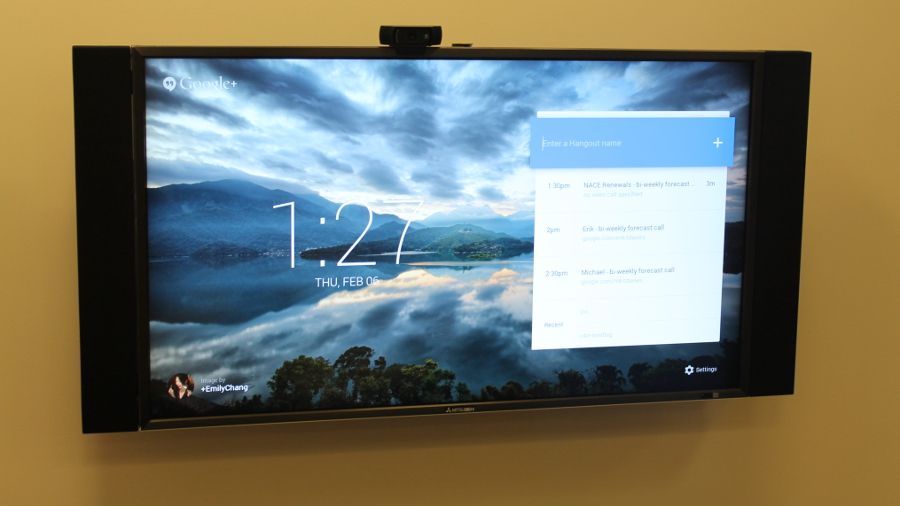Could Chromebox for Meetings change business videoconferencing?
A relatively low-cost videoconferencing device made for businesses
In several test calls, the entire system worked flawlessly. The 720p video for calls looked crisp and smooth with no stuttering problems. (The camera is capable of 1080p video if you want to use it with a different setup). The smooth video is partly due to the low overhead on the computer, which boots directly into Google Hangouts, and partly due to the high quality Logitech webcam which attaches to the top of the monitor using an included brace.
The computer itself can be mounted to a wall using an included bracket. The speaker also picked up voices in a small room and is omni-directional so you don't have to speak in one direction. The "wideband" frequency response means voices sounded clear and full, not muffled as they would on a Skype video call that uses too much compression, or a low-bandwidth internet call.
The Intel Core i7 processor also helps, especially to make sure the platform works reliably and without any lag. In a true videoconferencing suite at a large company, made by a company like Cisco or Lifesize, the one clear benefit is that the system has no lag. The idea is to reduce travel expenses when people decide to talk "virtually" rather than in person.
If you use Skype or a tool like Join.Me, you can mimic the same functionality of a videoconferencing suite but there might be bugs, latency issues, crashes, or other frustrations. By using a faster i7 (Haswell) processor and booting directly into Hangouts, the Dell Chromebox for Meetings runs fast enough to make sure there are no hiccups. Indeed, after several calls, there were no hints that the Chromebox would start acting like a Chromebook, which are notorious for running too slow and without enough RAM to accommodate full business apps in the browser.
Admin controls
On the back-end, admins might not have to do the Chromebox for Meetings install in the conference room, but they still have full control over how it works. Using the admin page, they can pick the room calendar, decide whether the device can call outside phone numbers, name the device, manage network options, and manage multiple devices.
Users also gain some control. Once the "room" for the Chromebox for Meetings is live, anyone can then schedule a meeting in Google Calendar for that room. They can add participants which can include any Google Hangouts user or other Chromebox for Meetings rooms.

When they do schedule the room, two things happen. One is that everyone can see the room is scheduled, which helps avoid double-bookings. Secondly, when they go to the actual room and use the Chromebox, the meeting will be listed on the screen. To start the conference, the meeting organiser can just start the new meeting and kick things off.
Sign up to the TechRadar Pro newsletter to get all the top news, opinion, features and guidance your business needs to succeed!
Again, this simplicity of scheduling and holding meetings is what makes the device so appealing. It fits within the ecosystem of a company that already relies on Gmail and other Google apps. (Those in a Microsoft ecosystem can still use the system, but don't expect it to link directly into Outlook or any of the Microsoft server products. It still requires Google at Work. You can use an Outlook plug-in to schedule and participate in meetings, however).
Of course, the system also requires all participants to use the Google ecosystem, but you can mix and match Hangouts users from the corporate accounts and consumer accounts.
Major potential
Overall, Dell Chromebox for Meetings is designed to make videoconferencing easier, faster, smoother, and more reliable than a mere desktop video chat. There's no question it could change how business videoconferencing works, as long as companies are willing to stick with Google Hangouts as the main conferencing platform.
John Brandon has covered gadgets and cars for the past 12 years having published over 12,000 articles and tested nearly 8,000 products. He's nothing if not prolific. Before starting his writing career, he led an Information Design practice at a large consumer electronics retailer in the US. His hobbies include deep sea exploration, complaining about the weather, and engineering a vast multiverse conspiracy.
